 Gareth gives a Master Class, and proves once again, that all the serious coaches in the world, whatever the discipline, are working on exactly the same lines.
Gareth gives a Master Class, and proves once again, that all the serious coaches in the world, whatever the discipline, are working on exactly the same lines.
Is there any difference in the dressage you are teaching eventing riders from what you are teaching dressage/dressage riders?
“No. The technical requirements are exactly the same. What I do have to have in mind sometimes, especially the ones I am training in England. How we connect the horse up, how we work with the horse, our expectation of what we are wanting in the movements, is exactly the same.”
“The basics are all the same. What is different is maybe the expectation of the amount of engagement, suspension, cadence, but the basics are exactly the same.”
For a long time there was the idea that you could teach eventers too much dressage – I guess Michi Jung has turned that idea on its head…
“You’ve got to look at training your horses at least a level above what you are going to be riding – to think of them as Small Tour dressage horses. Maybe don’t teach them a piaffe, because then tension comes in, is that going to be useful – but some of the German riders – like Ingrid Klimke – use it. But certainly working on the canter pirouettes, start working on your tempis, okay you don’t have to teach them ones, but as a rule, when a rider learns fours and threes, then the single change is so much easier to ride. If you can start to ride some basic zig zag work, it teaches you how to set your horse up and it teaches you what true collection is – because that is the big thing with the eventers, actually teaching them what true collection is.”
“If the riders could learn to ride to about Small Tour level, that would make a massive difference.”
The riders in the four-star made such a mess of the 8 metre circle, but when you are working at home if you can’t ride that circle, how do you get them around your leg, onto the outside rein, listening to the aids, it really is basic…
“It’s what they are doing before the 8 metre circle, it is not so much the circle. Those horses aren’t engaged enough, and they are not balanced enough, so that shoulder-in puts them out of balance, and then when they turn in, they get a drift, the horse falls in, it creates a misshapen circle – it has a flow on effect.”
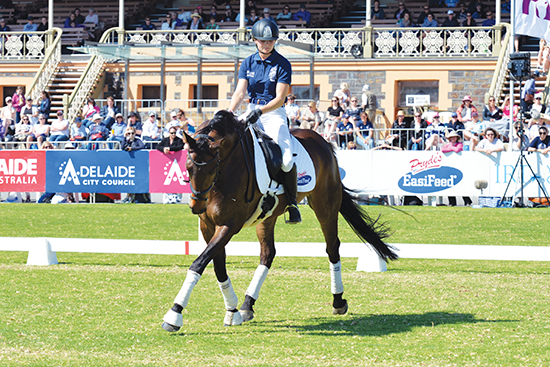
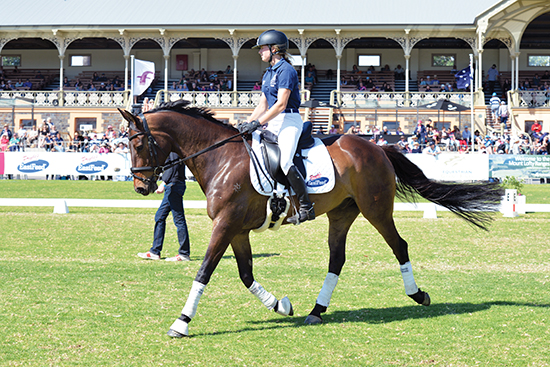 But Nuno Oliveira taught that the shoulder in is the ‘aspirin of dressage’, it is how you get a horse balanced…
But Nuno Oliveira taught that the shoulder in is the ‘aspirin of dressage’, it is how you get a horse balanced…
“Absolutely, but unless you are training for that, it doesn’t work like that. It is about realizing that these movements in the test, are your training exercises. The test movements are what you use to train, not what you train to do. But the riders are learning, and they are trying really hard to get better, they are learning that when you train, you have to ride them more like you do in a test. It is no use training them one way, then asking them to go a completely different way in the arena.”
“As a rider, if you can’t ride these lines at home, and you don’t train the setup you want, when you get into the test, it is very difficult. You should be able to sit outside the test and visualize, this is where my transitions are, this is where I am going to ride this or that.”
“You have a basic setup, fine – you’ve got to be adaptable, things happen, they spook, the environment, the atmosphere – but you’ve got to be able to see that and if you can’t see that, it makes those tests really hard to ride. You see riders, when it goes wrong in the arena, they go back out and ride them how they rode them before they went in. Think about what you are doing. Try to ride them how you want them to go in the arena.”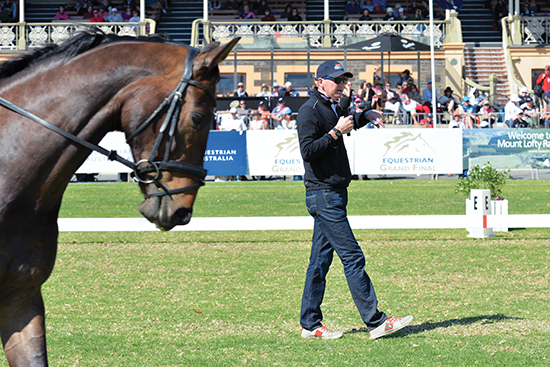
I thought watching the riders compete at Adelaide, the major problem was frame – I don’t think I saw one horse that was over the back, through the neck, reaching into the rider’s hands, with the movement flowing through. Not one – they were all blocked in the back, blocked in the neck…
“I think this is one reason I came here, so I can help the riders at a competition, is to see these horses in the arena. You can have an idea about the training, you can see them at home, but then when you see them in the arena, you think, right, that’s what we’ve got to work with. Then you can make a plan, and say, when your horse goes into the arena, it does this, they all react in different ways, but you are better off making mistakes and having correct frame and balance. You have to start there, with the balance and the frame, then mistakes disappear rather than trying not to make mistakes by losing balance. Even if you don’t make the mistake you are not going to get a great mark if you don’t have the frame.”
Our riders try to do it at home with the odd school from you, or one of our other trainers, but we are talking about training every eight, ten weeks, yet Michael Jung doesn’t try to do it without regular help, he has his father – are our riders supposed to be better than Michi?
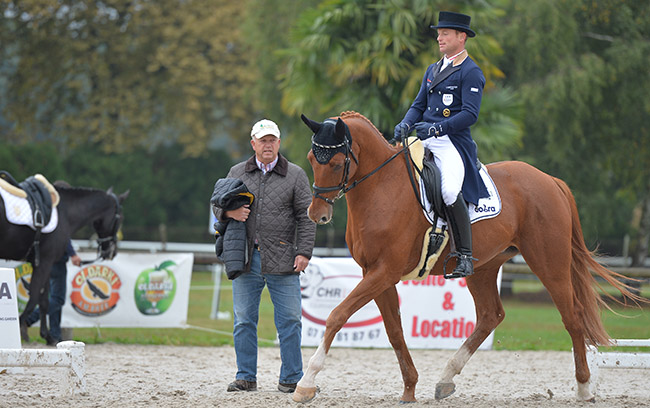
Michael Jung warming up for a test at a competition with his father as eyes-on-the-ground.
“You have good riders, your top riders are as good as any, but it is also a matter of creating a training mind-set. Talking about Michi Jung, he is a dressage rider who events, an eventer who does dressage, a showjumper who events and an eventer who showjumps. He is like Ingrid (Klimke), they are extremely talented riders, but also they have a training mind-set. We say we want to train, but it is actually getting into the habit of training all the time, and constantly wanting to better yourself.”
“All these Australian riders work really hard, it’s just a matter of working in the right way, and also having the right guidance….”
“What is important is having the help that is actually setting you up to do this. There are a lot of people who train, but unless they are training the way those judges want to see, and setting those horses and riders up for the test. It doesn’t work.”
“I’ve been very lucky, I’ve trained with Carl (Hester) and then you are in that environment all the time. The world of dressage has been turned on its head, proving you can ride in that very soft, relaxed, correct, I am going to use the word ‘classical’ but I just mean, correct way of riding, still with that expression, still with that gymnastic ability. When we ride with Carl, it is not about doing ten different things to try to get one thing, it’s trying to be direct, it is trying to be consistent and creating that understanding of how to mould the horse into that way of going.”
“We have all these horses with different conformation and ability, but they should all look the same. I think the other thing which makes it hard for some of the riders is that they haven’t been able to ride a real dressage horse and know what they are supposed to be feeling.”
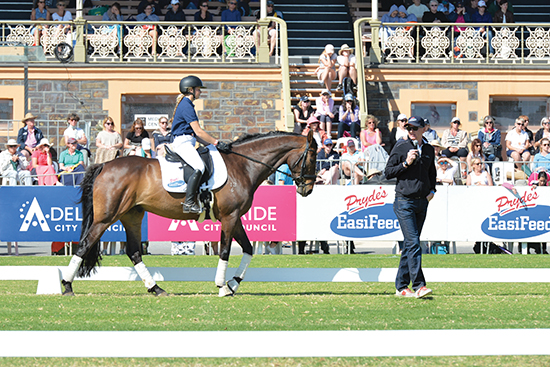 “It’s something when you are riding, instead of going off onto a tangent, I feel this, I feel that – well actually you need to feel this.”
“It’s something when you are riding, instead of going off onto a tangent, I feel this, I feel that – well actually you need to feel this.”
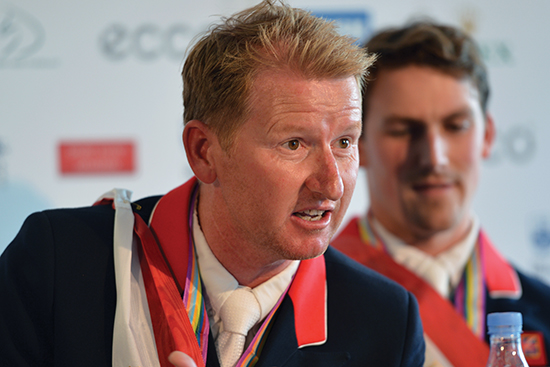 The Secret life of Gareth Hughes
The Secret life of Gareth Hughes
He may look like a silver medal winning member of the British Dressage team, but Gareth is really an Arab riding, cowboy Queenslander! Or that’s how he was raised. Born in England, Gareth grew up in Queensland, before the family moved back to England when Gareth was a teenager, and moved just down the road from British dressage rider, and now International judge, Stephen Clarke.
After working for Stephen, Gareth started having lessons from Carl Hester, and Carl is still his mentor, he talks about the privilege of sharing an arena on a regular basis with Charlotte Dujardin and Valegro.
Gareth rode DV Stenkjers Nadonna in the British silver medal winning team at the Europeans in Herning in 2013 and more recently has had success with Classic Briolinca, with 70+ GP and Special scores at Hartpury and Perl, and the 2022 British Championships.
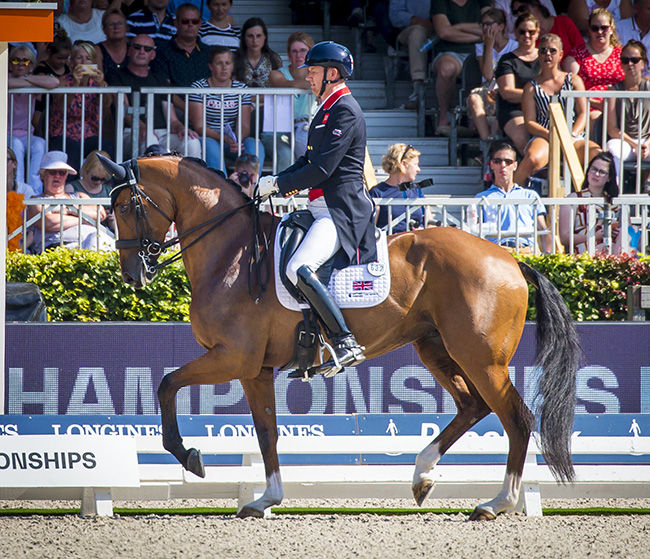
This article first appeared in the January 2016 issue of THM.



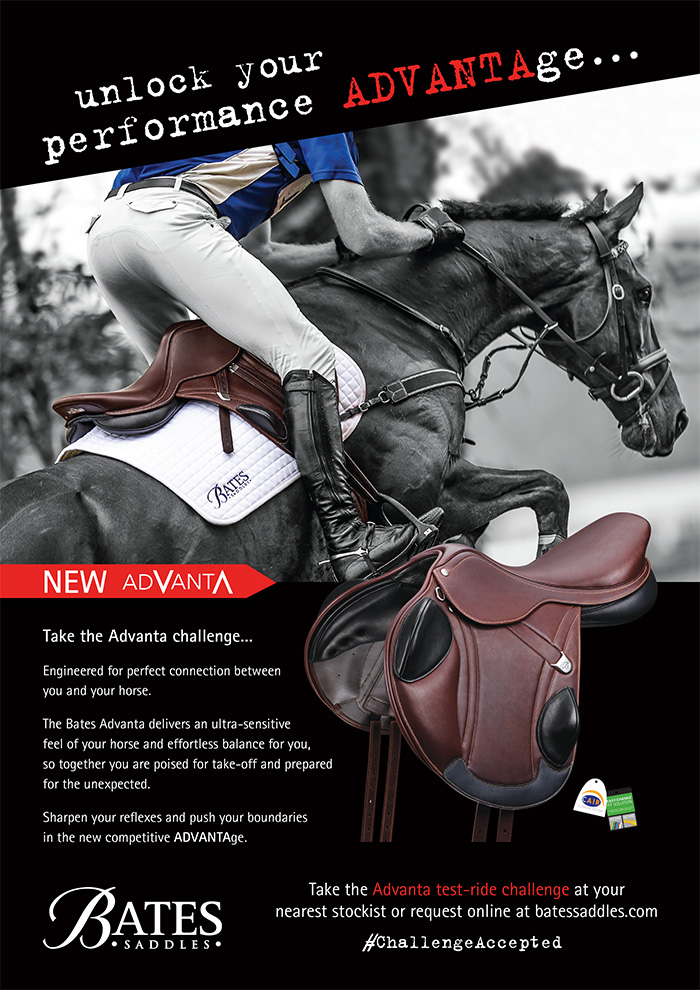
I feel like Hughes has been underrated for many years, it’s so neat to see him get more coverage. I remember becoming aware of him only about ten years ago and thinking “my god why isn’t this man world famous?” Perhaps it was just that he wasn’t being seen in the US as much. At any rate, glad to see him everywhere now. What a genius, I just love him.